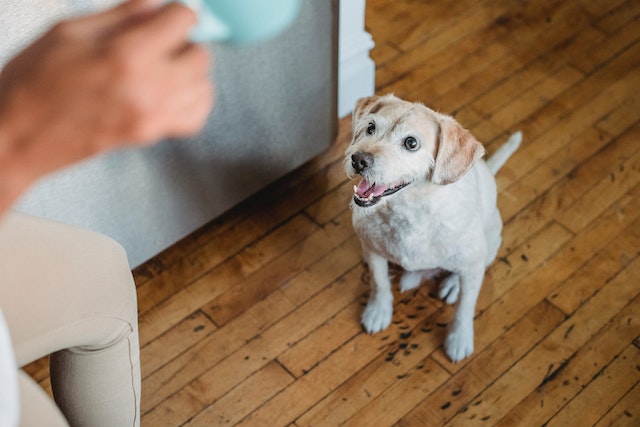- Dog Beaches
arrow_drop_down
- Dog Parks
arrow_drop_down
- Dog Camping Spots
arrow_drop_down
- Pet Sitting
arrow_drop_down
- Dog & Training Information
arrow_drop_down
- Dog Training
arrow_drop_down
- Dog Breeds
arrow_drop_down
- Dog Training
Top Tips for Teaching a Puppy to Be Alone at Home
- Puppy
- Training
-
Mar 12
- Share post

Training your puppy to be alone can help them prepare for those times in life when they need to be on their own. From crate training and problem-solving skills to teaching them how to relax while alone, there are several steps you can take to ensure your pup is comfortable and safe when separated from you.
Before you begin training your pup to be alone, make sure they have enough space for comfort and a safe environment. This could mean having their own crate or area designated for their naps and playtime when you’re not around. You may also want to provide them with toys and safety items that help keep them from chewing on furniture or getting into things they shouldn’t. Creating a comfortable space will also help your puppy feel less anxious when apart from you.
Have a dedicated resting spot for your pup, such as a crate or bed.
Having a space for your pup to retreat to can be a great way to teach them to stay in one place when you’re not home. Place their bed or crate in an area that’s comfortable, away from any possible distractions or dangers. Make sure the designated resting spot is stocked with cozy blankets, toys, and treats for when they get restless. This will also help create a positive association with the spot, making it easier for your puppy to stay there when you’re away.
Tie some tasty treats to the door handle when you leave the house.
Leaving some yummy treats behind when you’re out of the house can be a great way to distract your puppy and make them look forward to your absence. Have a stash of their favorite treats ready and try tying them to the door handle, letting them catch a whiff as you leave the house. Alternatively, you could even create an interactive toy that dispenses treats for longer home absences. This will help keep them occupied for at least parts of the time that you are away.
Ensure adequate exercise for your pup during the day and before you leave him home alone.
Exercise and playtime are essential for your pup’s physical and mental health. Provide them with both physical exercise, like walks and runs, or interactive play and games that offer mental stimulation. Make sure to rigorously plan your pup’s day so they both have something fun to look forward to, as well as plenty of rest. This will reduce the angst they may feel when you leave them home alone while ensuring they return in a happy, relaxed state after their solo time.
Leave the TV or radio on in order to provide some distraction from loneliness and create calming background noise.
When you leave, turn on the TV or a low profile radio station to provide your pup with some familiar background noise. This will distract them from feeling anxious and help create a calming environment conducive to restful sleep. Additionally, leave treats in places around your house that are fun for them to sniff out, such as puzzle toys or small treats hidden under furniture and beneath rugs. Doing so encourages exploration but also keeps them entertained while they’re home alone.
Tips for Walking Your Dog in Australia In Australia, keeping a dog in a cage for more…
Off-Leash Hiking with Dogs in Canberra We’ve discovered another great off-leash spot…
If you ask which dog breed is the most popular in Australia, the first one that comes…
My friend lives in Dee Why and has always raved about the dog-friendly beach park…
Want to bring your dog to a café? Let them enjoy some tasty treats and drinks too?…
After moving to Brisbane, we’ve spent a lot of time exploring the area with the…
